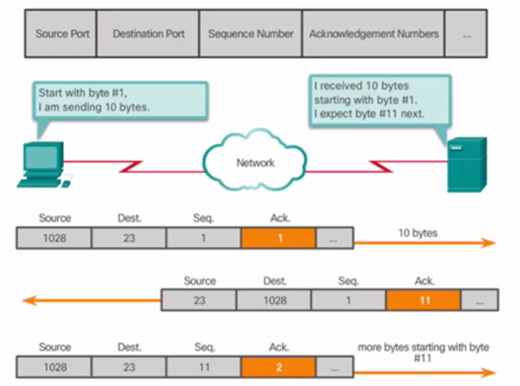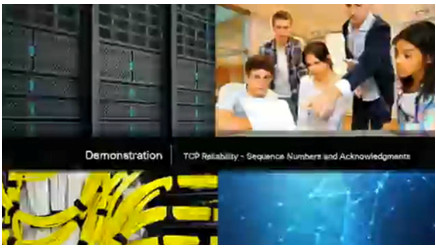Instructor Planning Guide
Activities
What activities are associated with this chapter?
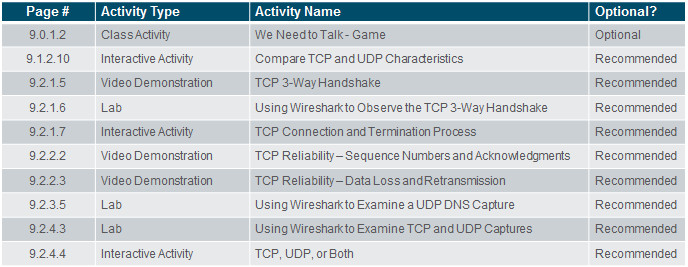

Assessment
Students should complete Chapter 9, “Assessment” after completing Chapter 9.
Quizzes, labs, Packet Tracers and other activities can be used to informally assess student progress.
Sections & Objectives
9.1 Transport Layer Protocols
Explain how transport layer protocols and services support communications across data networks.
Explain the purpose of the transport layer in managing the transportation of data in end-to-end communication.
Explain characteristics of the TCP and UDP protocols, including port numbers and their uses.
9.2 TCP and UDP
Compare the operations of transport layer protocols in supporting end-to-end communication.
Explain how TCP session establishment and termination processes facilitate reliable communication.
Explain how TCP protocol data units are transmitted and acknowledged to guarantee delivery.
Describe the UDP client processes to establish communication with a server.
Determine whether high-reliability TCP transmissions, or non-guaranteed UDP transmissions, are best suited for common applications.
Chapter 9: Transport Layer
9.1 – Transport Layer Protocols
9.1.1 – Transportation of Data
9.1.1.1 – Role of the Transport Layer
Responsible for establishing a temporary communication session between two applications and delivering data between them.
Link between the application layer and the lower layers that are responsible for network transmission.
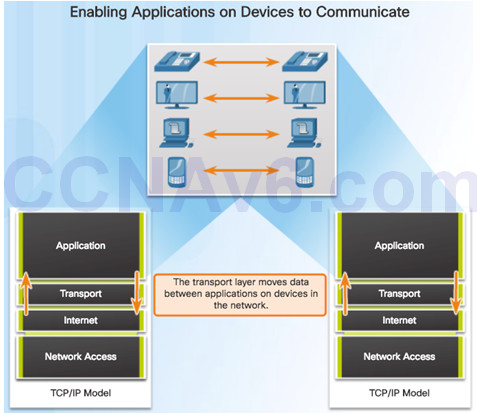
9.1.1.2 – Transport Layer Responsibilities
Tracking the Conversation – Tracks each individual conversation flowing between a source and a destination application.
Segmentation – Divides the data into segments that are easier to manage and transport. Header used for reassembly is used for tracking.
Identifying the Application – Ensures that even with multiple applications running on a device, all applications receive the correct data via port numbers.
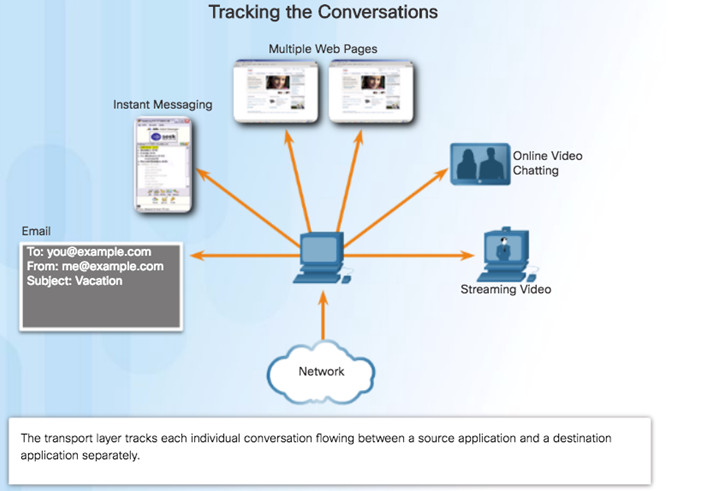
9.1.1.3 – Conversation Multiplexing
Segmenting the data into smaller chunks enables many different communications to be multiplexed on the same network.

9.1.1.4 – Transport Layer Reliability
TCP/IP provides two transport layer protocols:
- Transmission Control Protocol (TCP)
- Considered reliable which ensures that all of the data arrives at the destination.
- Additional fields needed in header which increases size and delay.
- User Datagram Protocol (UDP)
- Does not provide for reliability.
- Fewer fields and is faster than TCP.
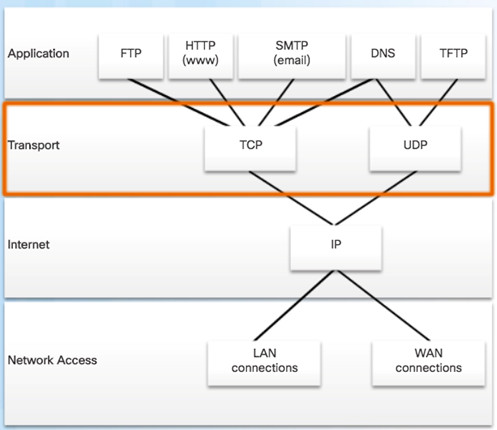
9.1.1.5 – TCP
TCP transport is similar to sending tracked packages. If a shipping order is broken up into several packages, a customer can check online to see the order of the delivery.





TCP Three Responsibilities:
- Numbering and tracking data segments
- Acknowledging received data
- Retransmitting any unacknowledged data after a certain period of time

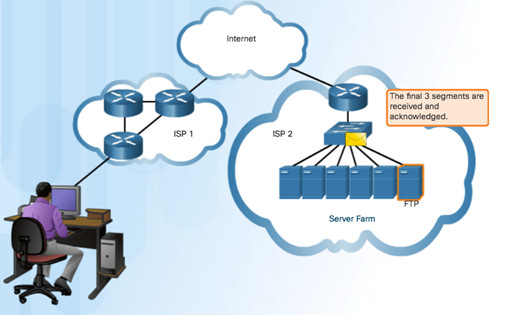
9.1.1.6 – UDP
Use UDP for less overhead and to reduce possible delays.
- Best-effort delivery (unreliable)
- No acknowledgment
- Similar to a non-registered letter

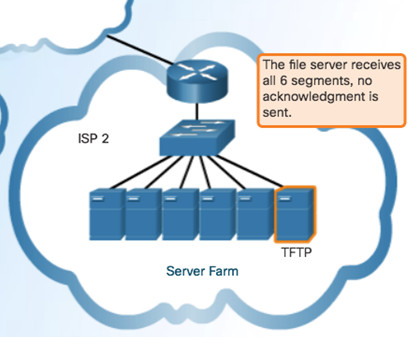
9.1.1.7 – The Right Transport Layer Protocol for the Right Application
TCP – databases, web browsers, and email clients require that all data that is sent arrives at the destination in its original condition.
UDP – if one or two segments of a live video stream fail to arrive, if disruption in the stream, may not be noticeable to the user.
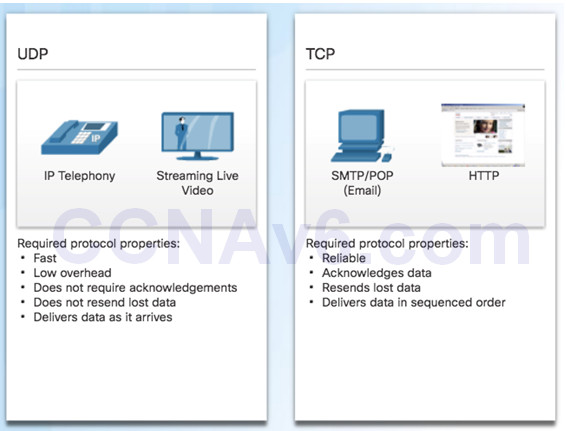
9.1.2 – TCP and UDP Overview
9.1.2.1 – TCP Features
Establishing a Session
- Connection-oriented protocol
- Ensures the application is ready to receive the data
- Negotiate the amount of traffic that can be forwarded at a given time
Reliable Delivery
- Ensuring that each segment that the source sends arrives at the destination
Same-Order Delivery
- Numbering & Sequencing the segments guarantees reassembly into the proper order
Flow Control
- Regulate the amount of data the source transmits
9.1.2.2 – TCP Header
Source and Destination Port used to identify application
Sequence number used for data reassembly
Acknowledgement number indicates data has been received and ready for next byte from source
Header length – length of TCP segment header
Control bits – purpose and function of TCP segment
Window size – number of bytes that can be accepted at one time
Checksum – Used for error checking of segment header and data
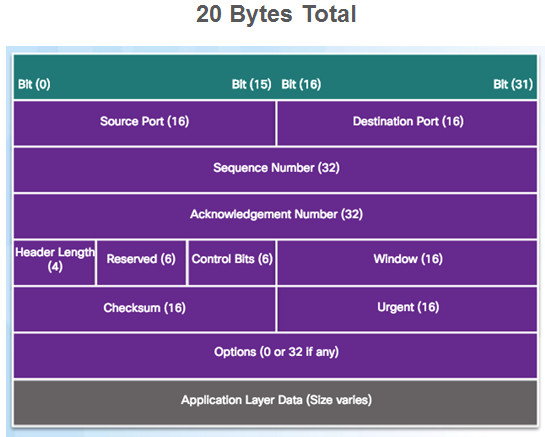
9.1.2.3 – UDP Features
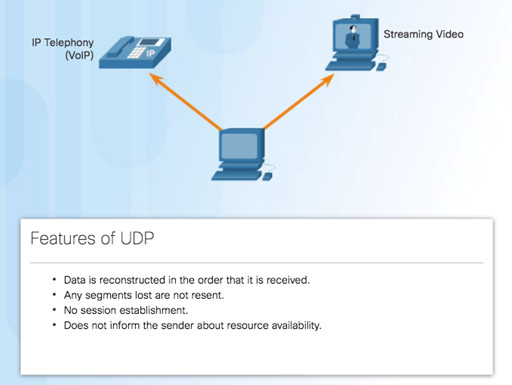
9.1.2.4 – UDP Header
UDP is a stateless protocol – no tracking
Reliability handled by application
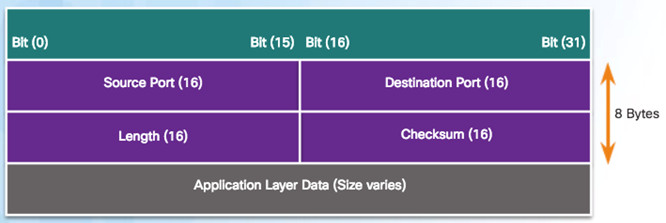
9.1.2.5 – Multiple Separate Communications
Users expect to simultaneously receive and send email, view websites and make a VoIP phone call
TCP and UDP manage multiple conversations by using unique identifiers called port numbers
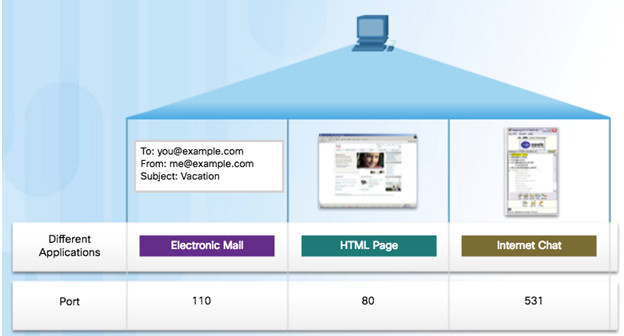
Source Port
- Originating application port that is dynamically generated by sending device
- Example: Each separate HTTP conversation is tracked based on the source ports.
Destination Port
- Tell the destination what service is being requested
- Example: Port 80 web services are being requested
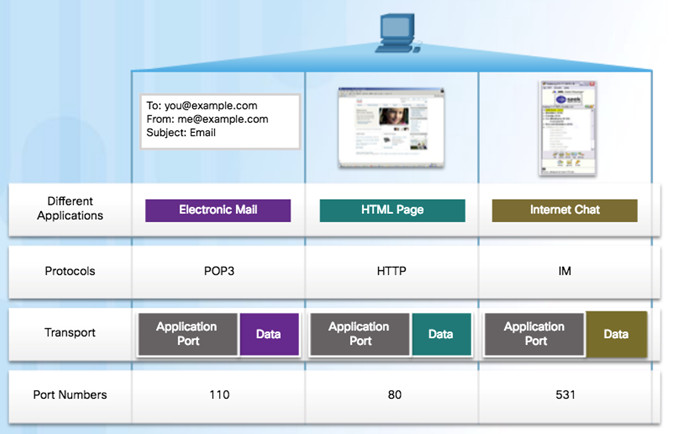
9.1.2.7 – Socket Pairs
Source and destination port placed in segment
Segments encapsulated in IP packet
IP and port number = socket
Example: 192.168.1.7:80
Sockets enable multiple processes to be distinguished
Source port acts as a return address
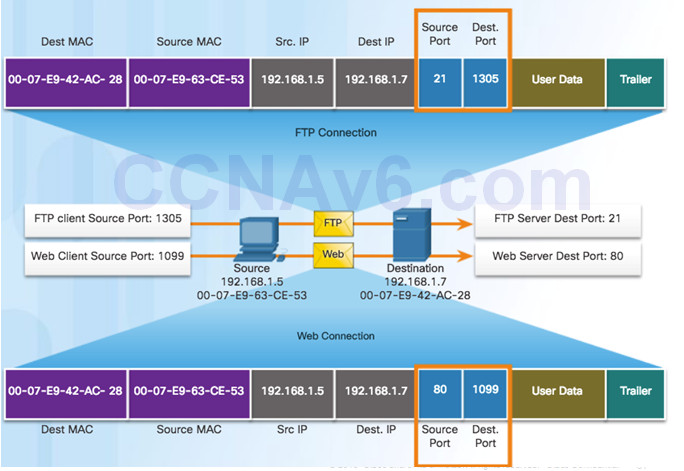
9.1.2.8 – Port Number Groups

Well-known Ports (Numbers 0 to 1023) – These numbers are reserved for services and applications.
Registered Ports (Numbers 1024 to 49151) – These port numbers are assigned by IANA to a requesting entity to use with specific processes or applications.
Dynamic or Private Ports (Numbers 49152 to 65535) – Usually assigned dynamically by the client’s OS and used to identify the client application during communication.
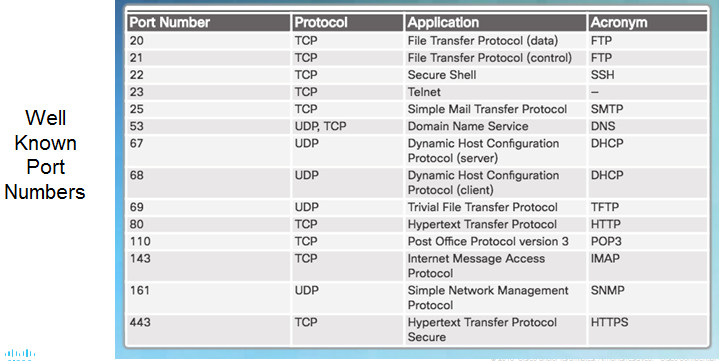
9.1.2.9 – The netstat Command
Network utility that can be used to verify connections
By default, will attempt to resolve IP addresses to domain names and port numbers to well-known applications
-n option used to display IPs and ports in numerical form
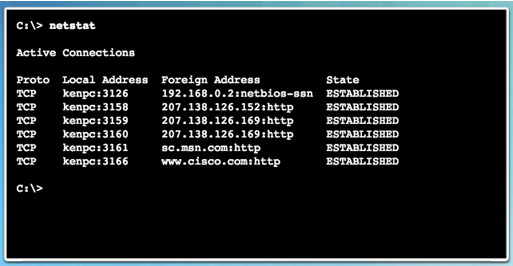
9.2 – TCP and UDP
9.2.1 – TCP Communication Process
9.2.1.1 – TCP Server Process
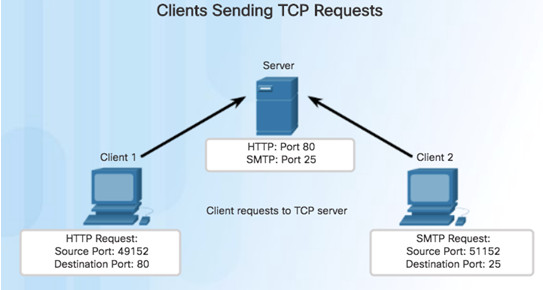
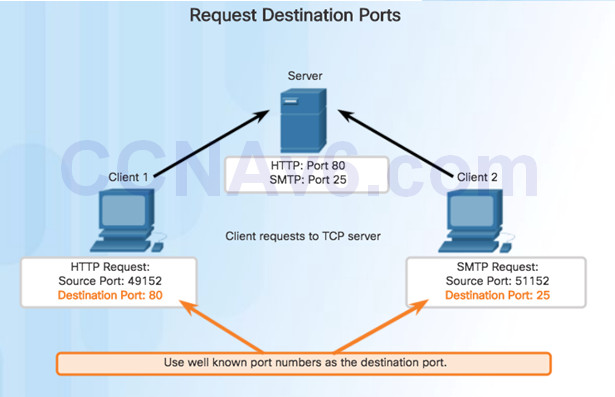
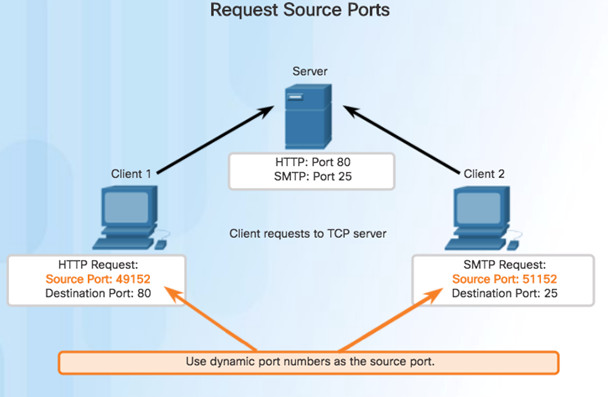

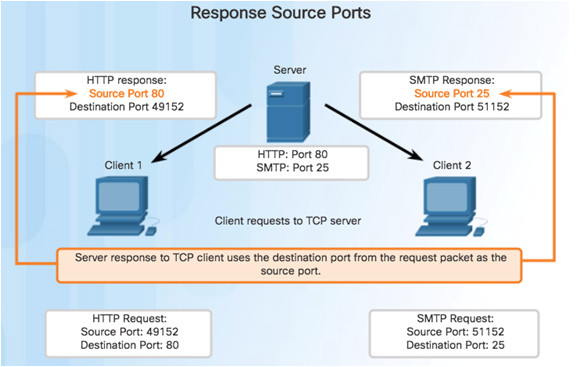
9.2.1.2 – TCP Connection Establishment
Step 1 – Initiating client requests a session with server.
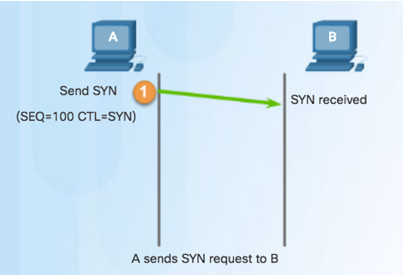
Step 2 – Server acknowledges and requests a session with client.
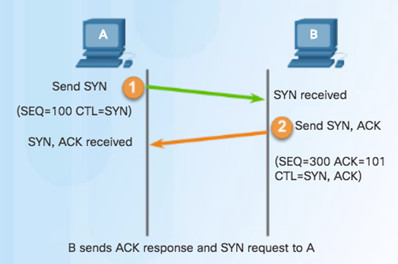
Step 3 – Client acknowledges communication session with server.
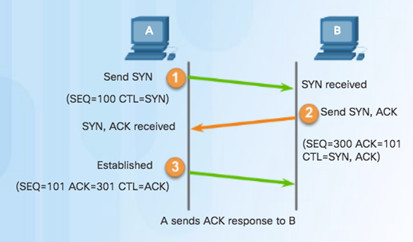
9.2.1.3 – TCP Session Termination

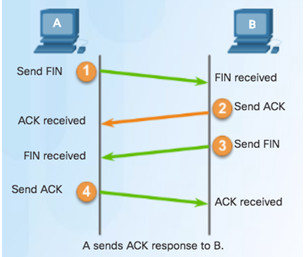
To close a connection, the Finish (FIN) control flag must be set in the segment header.
To end each one-way TCP session, a two-way handshake, consisting of a FIN segment and an Acknowledgment (ACK) segment, is used.
To terminate a single conversation supported by TCP, four exchanges are needed to end both sessions.
9.2.1.4 – TCP Three-way Handshake Analysis
The three-way handshake:
- Establishes that the destination device is present on the network.
- Verifies that the destination device has an active service and is accepting requests on the destination port number that the initiating client intends to use.
- Informs the destination device that the source client intends to establish a communication session on that port number.
The six bits in the Control Bits field of the TCP segment header are also known as flags.
- RST flag is used to reset a connection when an error or timeout occurs
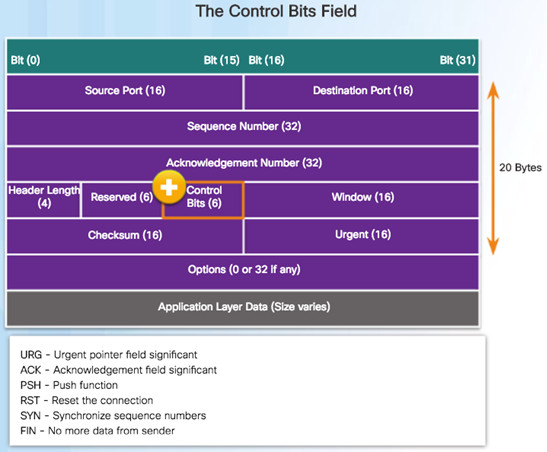
9.2.1.5 – Video Demonstration – TCP 3-Way Handshake
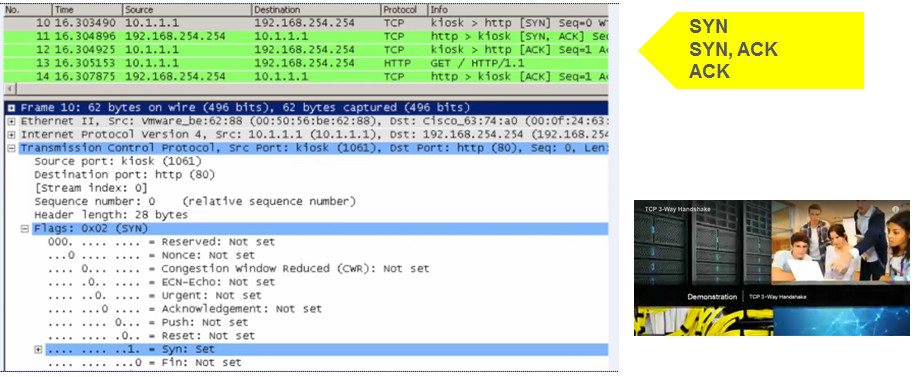
9.2.1.6 – Lab – Using Wireshark to Observe the TCP 3-Way Handshake
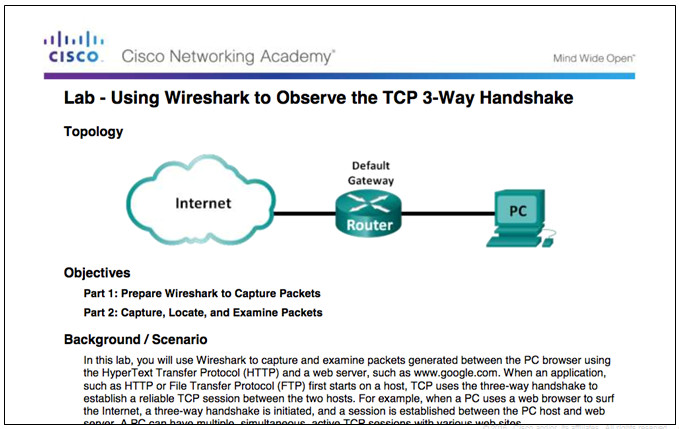
9.2.2 – Reliability and Flow Control
9.2.2.1 – TCP Reliability – Ordered Delivery
Sequence numbers are assigned in the header of each packet.
Represents the first data byte of the TCP segment.
During session setup, an initial sequence number (ISN) is set – represents the starting value of the bytes.
As data is transmitted during the session, the sequence number is incremented by the number of bytes that have been transmitted.
Missing segments can then be identified.
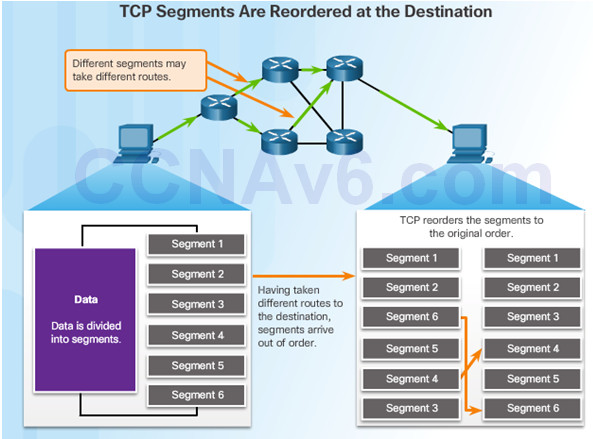
9.2.2.2 – Video Demonstration – TCP Reliability – Sequence Numbers and Acknowledgments
9.2.2.3 – Video Demonstration – Data Loss and Retransmission
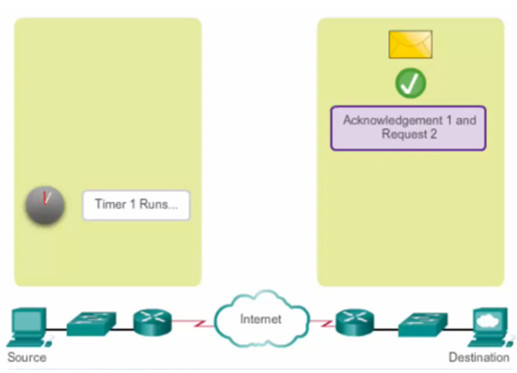

9.2.2.4 – TCP Flow Control – Window Size and Acknowledgments
In the figure, the source is transmitting 1,460 bytes of data within each segment.
Window size agreed on during 3-way handshake.
Typically, PC B will not wait for 10,000 bytes before sending an acknowledgment.
PC A can adjust its send window as it receives acknowledgments from PC B.
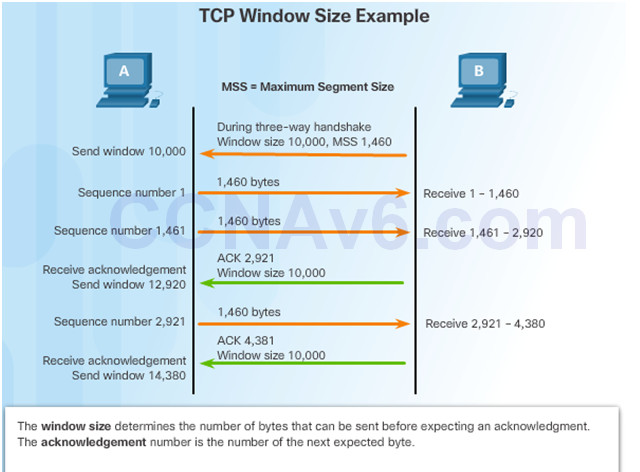
9.2.2.5 – TCP Flow Control – Congestion Avoidance
Congestion causes retransmission of lost TCP segments
Retransmission of segments can make the congestion worse
To avoid and control congestion, TCP employs several congestion handling mechanisms, timers, and algorithms
Example: Reduce the number of bytes it sends before receiving an acknowledgment
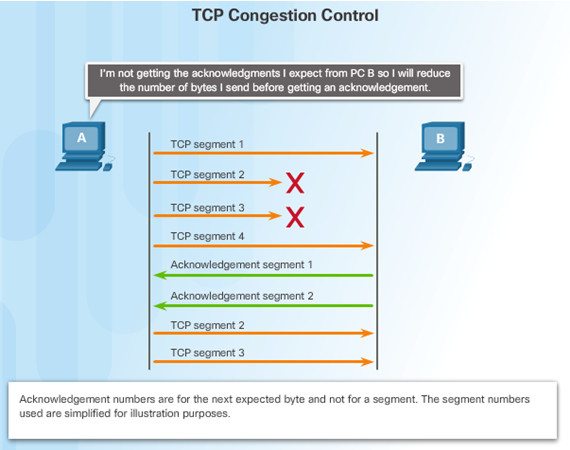
9.2.3 – UDP Communication
9.2.3.1 – UDP Low Overhead versus Reliability
UDP not connection-oriented
No retransmission, sequencing, and flow control
Functions not provided by the transport layer implemented elsewhere
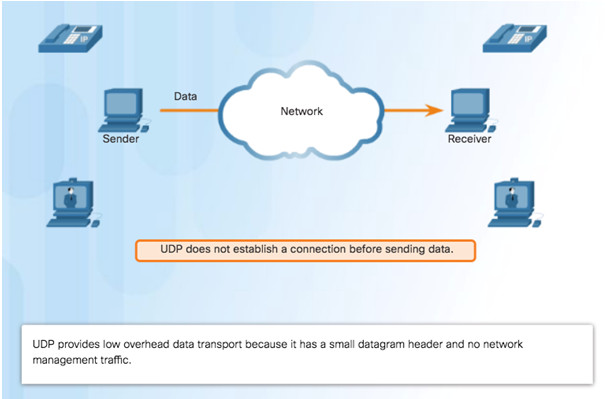
9.2.3.2 – UDP Datagram Reassembly
UDP reassembles data in order received and forwards to application
Application must identify the proper sequence

9.2.3.3 – UDP Server Processes and Requests
Note: The Remote Authentication Dial-in User Service (RADIUS) server shown in the figure provides authentication, authorization, and accounting services to manage user access.
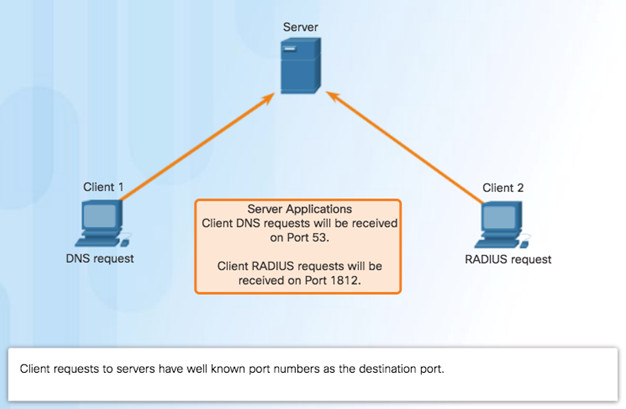
9.2.3.4 – UDP Client Processes
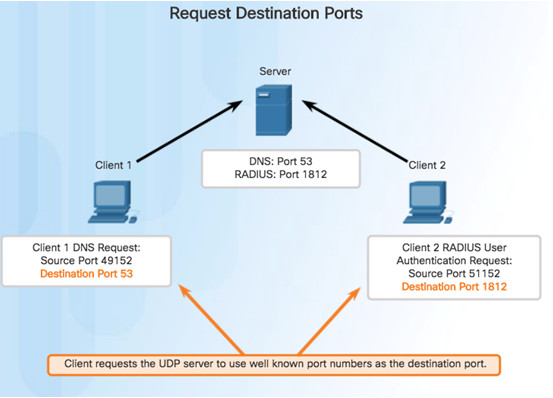
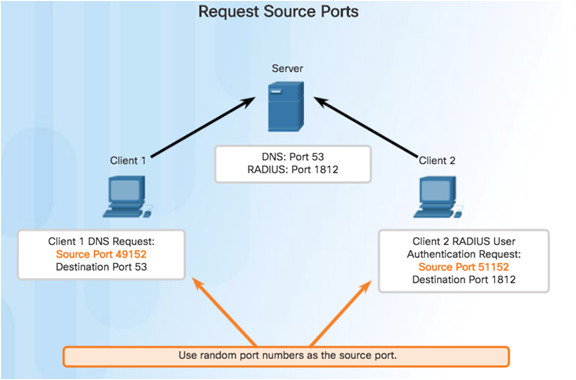
Clients Sending UDP Requests

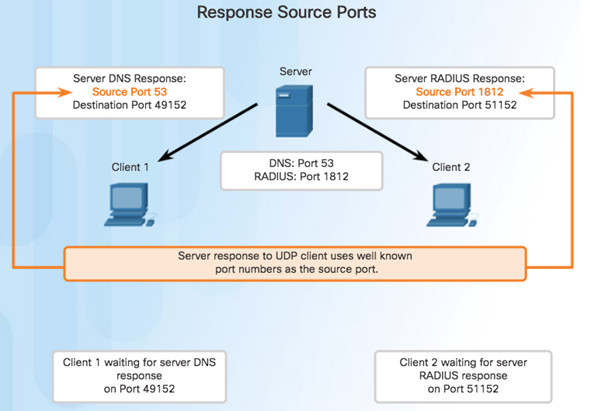
Clients Sending UDP Requests
9.2.3.5 – Lab – Using Wireshark to Examine a UDP DNS Capture
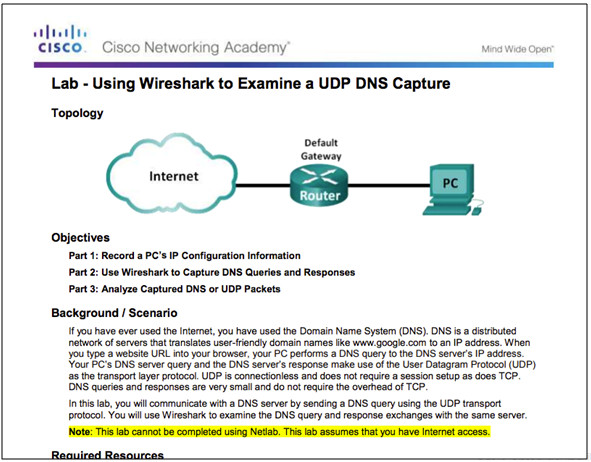
9.2.4 – TCP or UDP
9.2.4.1– Applications that use TCP
TCP frees applications from having to manage reliability
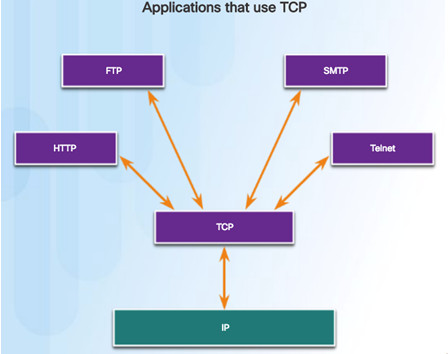
9.2.4.2 – Applications that use UDP
Three types of applications best suited for UDP:
- Live video and multimedia
- Simple request and reply
- Handle reliability themselves
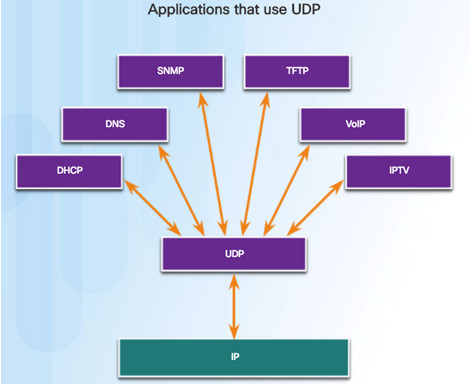
9.2.4.3 – Lab– Using Wireshark to Examine TCP and UDP Captures
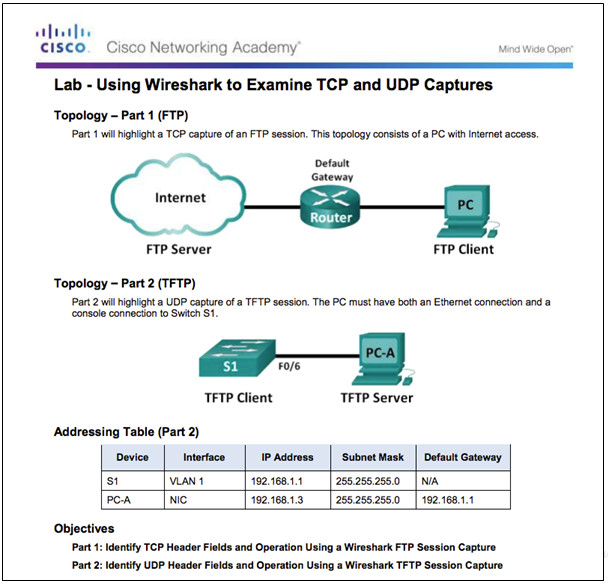
9.3 – Summary
9.3.1 – Conclusion
9.3.1.2 – Packet Tracer – TCP and UDP Communications

9.3.1.3 – Chapter 9: Transport Layer
Explain how transport layer protocols and services support communications across data networks.
Compare the operations of transport layer protocols in supporting end-to-end communication.
New Terms and Commands
Section 9.1

Section 9.2


